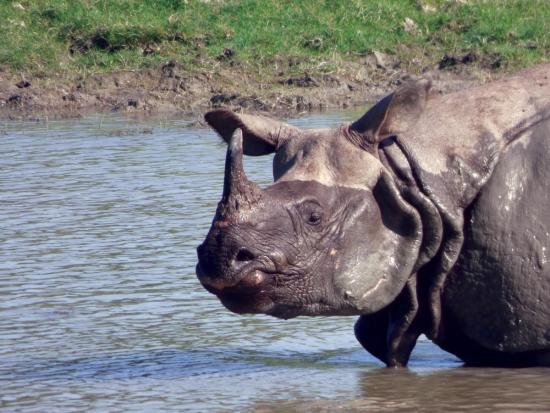Modeling the Impact of Poaching on Indian Rhinos
CBSG was invited to conduct a population viability analysis (PVA) for the Indian rhinos in the state of Assam, the results of which indicate a high risk of extinction due to the threat of poaching.

 Photo: Susie Ellis
Photo: Susie Ellis
Facts:
- The abundance of Indian rhinos in the wild rebounded from fewer than 200 animals in the early 20th century to more than 3,000 individuals today.
- Flooding events along the Brahmaputra River, forming the northern boundary of Assam’s Kaziranga National Park, may increase in frequency and intensity in the coming years, leading to higher risk of rhino mortality if they are unable to find high ground.
- Indian rhinos are poached due to demand for their horn, which is used for medicinal purposes in Asia.
The Situation
Greater one-horned rhinos (Rhinoceros unicornis) roam the protected areas across northern India and southern Nepal. Also known as Indian rhinos, over 75% of the population is found in northeastern India’s state of Assam, largely within the borders of the famous Kaziranga National Park. While the species has recovered from the brink of extinction in the last century, poaching pressure now poses a serious threat to local populations. To address this threat, the program “Indian Rhino Vision (IRV) 2020” was created to reduce rhino extinction risk across Assam by translocating animals to multiple protected areas.
The Process
CBSG was invited by the International Rhino Foundation, the IUCN SSC Asian Rhino Specialist Group, and the Government of Assam to conduct a population viability analysis (PVA) for the state’s rhinos. The resulting workshop was developed to review progress of IRV 2020 translocation programs to date and to predict the translocation effort needed to establish viable populations in selected protected areas. The meeting, which was attended by numerous park directors, wildlife wardens, and other park staff, focused on the current and potential impacts of poaching on current or future rhino populations in the park.
The Results
The PVA highlighted the severe consequences of poaching just one to two animals each year from a small population like that in Manas National Park, where nearly 20 rhinos have been introduced since 2008. PVA models developed at the workshop suggested that unless poaching is significantly reduced, continued reintroduction of rhinos is unlikely to result in a viable population in Manas, and the rhino population there could decline to extinction within 30 years. These analyses have been presented to local, regional, and national governmental authorities in order to mobilize resources for more effective protection of rhinos in Manas and more aggressive anti-poaching efforts in and near the park.
More:


